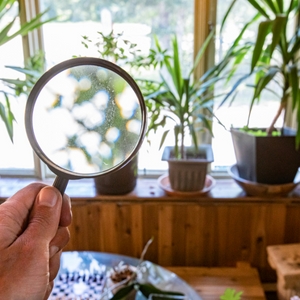Exploring the Reasons and Remedies for Indoor Air PollutionPosted by Pratik Shah on January 27th, 2023  Indoor air pollution is a growing concern in today’s world. It can have profound health implications, such as respiratory problems, allergies, and cancer. Fortunately, there are ways to reduce indoor air pollution and keep your home healthy. One of the most common causes of indoor air pollution is poor ventilation. Without adequate ventilation, pollutants such as dust, mold, and chemicals can build up in the air. To reduce indoor air pollution, make sure your home is well-ventilated. Open windows when possible, use fans to circulate air and install an air purifier to remove pollutants. Another major cause of indoor air pollution is household chemicals. Many household products, such as cleaning supplies, paints, and air fresheners, contain volatile organic compounds (VOCs) that can harm your health. To reduce exposure to VOCs, use natural cleaning products whenever possible, and avoid using air fresheners. Why Should We Be Concerned About the Indoor Air Quality Index (IAQI)?Indoor Air Quality (IAQ) is the measure of air inside and around buildings and structures and its impact on the health and comfort of those occupying the space. Recognizing and managing typical indoor pollutants can reduce our risk of developing indoor health issues. Approximately 1.5 million people die annually due to the indoor burning of solid fuels, with the majority of fatalities occurring among women and children in developing nations. How Can We Make Our Homes’ Air Quality Better?By taking these steps below, as the pharmaceutical industry suggests, you can help keep your home’s air clean and healthy. Adequate VentilationProper ventilation is essential for limiting exposure to poor-quality indoor air. During the construction of a home, it is important to ensure adequate ventilation. If a dwelling is not well-ventilated, measures such as installing a window above the cooking stove and providing cross-ventilation through doors should be taken. Additionally, ventilation systems can clean the air and provide fresh air. Changing BehaviorModifying behavior and habits can involve altering how the stove is utilized and how much time people spend in various micro-environments within and outside the home. Maintaining a Dry Home EnvironmentMaintaining a dry home environment is critical to reducing the presence of these contaminants and improving air quality. This can be done by using a dehumidifier, fixing any water leaks, and using exhaust fans in the kitchen and bathroom to vent moisture out of the home. Air PurifiersAn air purifier can help safeguard your health by eliminating indoor air pollutants such as dust, pollen, mold spores, and pet dander. These devices can also remove volatile organic compounds (VOCs), carbon monoxide, and other hazardous chemicals from the air. For those looking for additional help in reducing indoor air pollution, a pharma company in Surat can provide air purifiers and other products to help improve air quality.
A Stove’s DesignReplacing traditional smoky and leaky cooking stoves with more efficient, smokeless models that feature an exhaust system is an effective way to improve air quality. Air SanitizerUsing Air Sanitizer, you can create a healthier environment in your home. This air sanitizer eliminates germs, bacteria, and viruses that cause illness while freshening the air with a pleasant scent. It helps protect your family from airborne infections while providing a pleasant aroma. High-Efficiency Particulate Air (HEPA) FiltersHEPA filters effectively reduce indoor air pollution, as they can remove 99.97% of airborne particles 0.3 microns or larger. This includes pollutants such as mold spores, dust mites, pet dander, and tobacco smoke. These filters can be used in various applications, such as vacuums, air purifiers, and heating and cooling systems. Eco-Friendly CleanersRather than using conventional cleaning products that contain potentially hazardous chemicals, opt for green cleaners made with natural ingredients like white vinegar, borax, citrus fruit, baking soda, and essential oils. These natural ingredients are not only non-toxic, but they are also highly effective at eliminating dirt, dust, and grime while leaving surfaces sparkling clean. Indoor PlantsIn 1989, NASA conducted a study that revealed certain houseplants to be highly effective at eliminating various air pollutants. Examples of these air-purifying plants include English ivy, pathos, peace lilies, and bamboo palms. ConclusionChemicals can also be reduced by using natural cleaning products and avoiding aerosol sprays. Finally, radon can be managed by having the home tested for radon levels and installing a radon mitigation system if necessary. Additionally, partnering with pharmaceutical companies can help ensure that your family receives the best possible care. And By taking these steps, you can reduce the risk of indoor air contamination and improve the health and well-being of everyone in your home.
Like it? Share it!More by this author |


